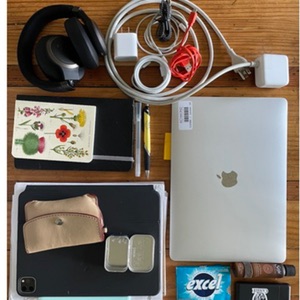When considering the translation of an image over that of sound, one must consider the translation of technologies. Some images are simple to identify in that the items are universally recognizable through sound. Additionally, what code is used to translate the articles? Are the consumers familiar with the chosen literacy? How are objects contextualized? What literacies are accessed to do so?
When considering the categorization used by The New London Group, in their article, A Pedagogy of Multiliteracies: Designing Social Futures, one might consider the audio design (whether to use music or sound effects), Spatial Design (how the items are used in specific spaces), and how the literacies are interconnected.
Soundscapes enable a different kind of semiotic capture. How might we hear electricity? Or the sound of fresh air to represent gum. What song do I hear when I see the wildflower journal?
Rethinking What’s in My Bag through the lens of sound deepens my sense of meaning-making. I connected items to words and then searched sounds for those words through my browser. I had never considered the sound of electricity or the shifting of a hand along paper when writing. There are nuances and possibilities in how these items are seen, and changing of the prescribed literacy allows those affordances to be more transparent.
Press the link to hear my Bag Soundscape: https://youtu.be/37MwF5oJlDE

Futures, D. S. (1996). A pedagogy of multiliteracies: Designing social futures. Harvard Educational Review, 66(1).